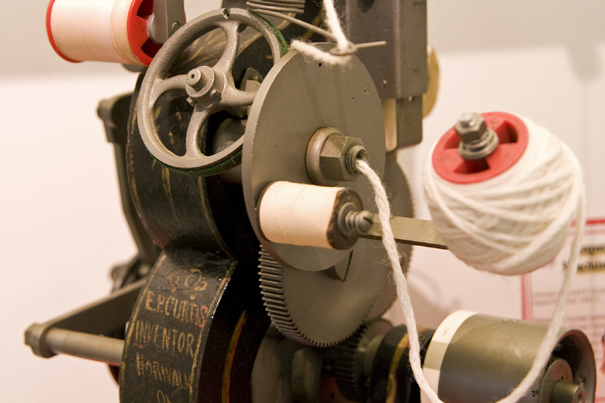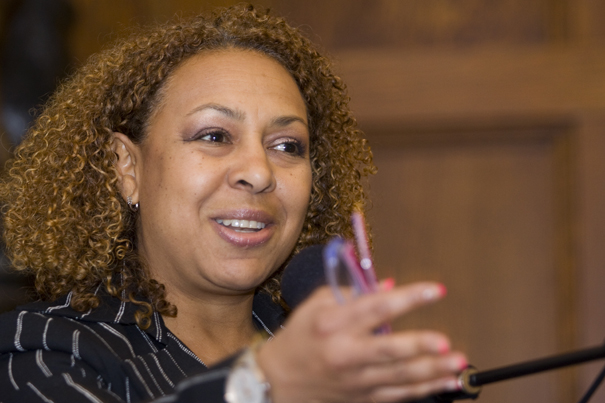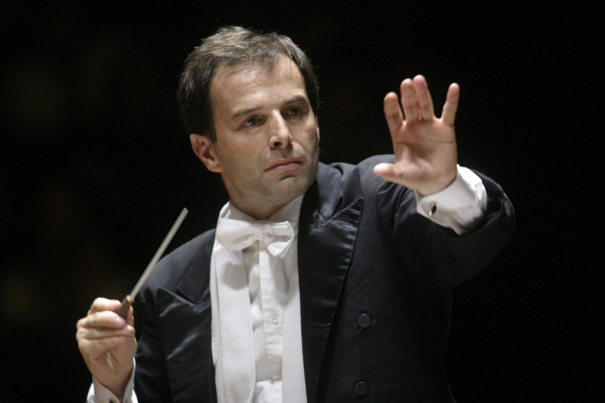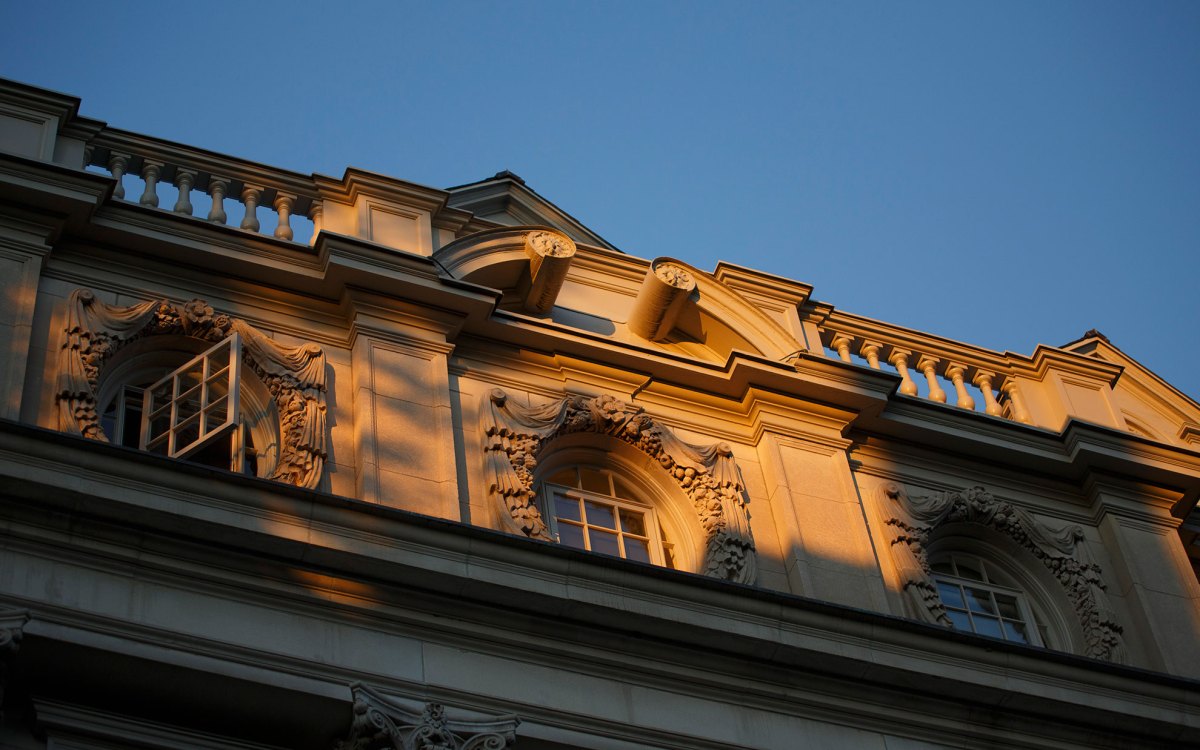Arts & Culture
-

Is the secret to immortality in our DNA?
Alum’s campus novel offers cautionary tale to biotech culture
-

Solomons’ treasure
Cambridge couple’s art collection now shines in Harvard Art Museums
-

Did Jane Austen even care about romance?
Scholars contest novelist’s ‘rom-com’ rep as 250th anniversary ushers in new screen adaptations
-

When trash becomes a universe
Artist collective brings ‘intraterrestrial’ worlds to Peabody Museum
-

Need a good summer read?
Whether your seasonal plans include vacations or staycations, you’ll be transported if you’ve got a great book. Harvard Library staff share their faves.
-

From bad to worse
Harvard faculty recommend bios of infamous historical figures
-
History on a small scale
On the second floor of Harvard’s Science Center is a temporary exhibit of 75 patent models from the 19th century, a time of prolific American invention that produced the revolver, zippers, trolley cars, and cash registers.

-
Impressions of women
More than ever, the Harvard Art Museum is making it easier for scholars and students to use its permanent collection (more than 250,000 works) to shed light on a variety of disciplines.
-
Peabody Museum receives grant to preserve maps, plans, and drawings
The Peabody Museum of Archaeology and Ethnology has been awarded a $150,000 grant from the U.S. Institute of Museum and Library Services (IMLS).
-
Harvard Department of Music announces $226,000 in fellowships
The Music Department’s Oscar S. Schafer Award is given to students “who have demonstrated unusual ability and enthusiasm in their teaching of introductory courses, which are designed to lead students to a growing and lifelong love of music.” This year’s recipients are David Sullivan and Karola Obermüller.
-
Peabody awards photography fellowship
The Peabody Museum of Archaeology and Ethnology has recently announced Alessandra Sanguinetti as the recipient of the 2009 Robert Gardner Fellowship in Photography.
-
Seceding from the secessionists
Deep in Civil War Mississippi, where manicured plantations gave way to wild swampland and thick pine forests, a young white man named Newton Knight led a ragtag band of guerilla fighters against the Confederate Army. His story is one of personal bravery and unwillingness to adhere to the secessionist movement that all but surrounded him.
-
Two views of disparate cultures
Art historian Kellie Jones, the child of two writers, grew up in the 1960s and 1970s on Manhattan’s Lower East Side. It was a place of cultural ferment, creation, and comparative racial freedom. Jones is exploring new visual and literary ways to convey her personal history. Legal scholar Stacy Leeds, an expert in tribal law, once served on the Cherokee Supreme Court — the youngest ever to do so, and the only woman.

-
Sarah Messer’s surreal poetics
With long, sun-streaked tresses, Sarah Messer doesn’t strike one as a poetess whose work conjures American histories in bewitching, surrealist twists. But Messer’s poems navigate farther and farther from the familiar mainland into a world wholly her own.
-
Cortese new conductor of Harvard-Radcliffe Orchestra
Harvard’s Office for the Arts (OfA) and Music Department announced that Federico Cortese has been appointed conductor of the Harvard-Radcliffe Orchestra (HRO).

-
Libraries launch ‘Expeditions and Discoveries’
Harvard’s Open Collections Program has launched “Expeditions and Discoveries: Sponsored Exploration and Scientific Discovery in the Modern Age.” Through the new collection, Internet users can find thousands of maps, photographs, and published materials, along with field notes, letters, and unique manuscript materials on sponsored exploration and related scientific discoveries between 1626 and 1953.
-
How’d the Russians get the H-bomb?
Ever hear of Elugelab? Until Oct. 31, 1952, it was an island on Eniwetok Atoll in the Pacific Ocean. Then it vanished, consumed in the fireball of the world’s first hydrogen bomb.
-
The Sacco-Vanzetti Affair
The infamous Massachusetts controversy on the conviction and execution of Italian anarchists Nicola Sacco and Bartolomeo Vanzetti gets fresh eyes as Moshik Temkin examines how the polarizing murder case led to contemporary repercussions.
-
On the road in the fifth century: Visions of heaven, hell
During the fifth century, travelers began to depart China more frequently than ever before, venturing outward from medieval cities to explore lands in Central and South Asia. A range of individuals eagerly took to the road, writing extensively about their journeys and returning home with elaborate accounts.
-
The Arsenale
“Provocative” — one of the most-used words to describe art — may be an understatement for “The Arsenale,” the thesis exhibition for students in the Department of Visual and Environmental Studies, held at the Carpenter Center.
-
Not so elementary, my dear Watson
For more than a century, Sherlock Holmes, the most famous creation of Sir Arthur Conan Doyle, has captivated mystery fans, literary scholars, and researchers of virtually every stripe. But, as dozens of Doyle scholars and Sherlockians showed during a recent three-day symposium at Harvard, the Holmes stories represent only a small part of Doyle’s contribution to literature.
-
REISCHAUER INSTITUTE SEEKS PAPERS
The Edwin O. Reischauer Institute of Japanese Studies is now accepting submissions for its 2009 Noma-Reischauer Prizes in Japanese Studies, given to the undergraduate and graduate students with the best essays on Japan-related topics. The submission deadline is June 30, and $3,000 will be awarded for the best graduate student essay and $2,000 for the best undergraduate student essay.
-
FAS launches budget Web site
The Faculty of Arts and Sciences (FAS) has created a new Web site to provide faculty, staff, and students with up-to-date information on cost-saving measures.
-
Writers at risk talk about their lives
For some, words are both a way of life and a way of risking life. Last year, 877 writers and journalists around the world were killed, jailed, or attacked.
-
Family of ‘Doc Burr’ donates ‘treasure trove of American cinema’ to HFA
It began as a childhood hobby, but for Howard Burr, collecting films became a lifelong passion. A dentist by trade, Burr amassed a collection that would make most cinephiles envious: nearly 3,000 films, including many rare prints, B films, and vintage Technicolor prints.
-
The ‘art’ of retirement
“May I have your attention!” yells Bill Boone, director of the Frances Addelson Shakespeare Players at the Harvard Institute of Learning in Retirement (HILR). “Frances is in Harvard Square!”
-
Arts Medalist Ashbery ’49 charms audience
Before John Ashbery ’49 was one of the most influential and celebrated poets of modern times, he moonlighted as an English translator of French detective novels under the pseudonym “Jonas Berry.” But the self-dubbed “hair-brained, homegrown, Surrealist” poet bestowed his fitting absurdist style to these books, including adding the sex scenes the publisher requested to please American readers.
-
Art for sale!
Harvard gave Christie’s and Sotheby’s a run for their money at the first Harvard Student Art Show on Monday (May 4). The exhibit and sale, held in a bright yellow tent on the Science Center Lawn, featured 160 works of painting, sculpture, photography, and other media such as jewelry and clothing. Students from across the University submitted artwork ranging in price from $30 to $8,000.
-
Rockefeller grants open up world for undergrads
Nearly 500 Harvard undergraduates will learn about other cultures by participating in high-quality international experiences this summer, thanks to the generosity of David Rockefeller, longtime University benefactor and member of the Harvard College Class of 1936.
-
Talent takes to the street
Behind a large white tent in front of the Science Center, Harvard University Dining Services staff members worked over sizzling grills, cooking hot dogs and hamburgers to feed a large crowd of staff, students, and Greater Cambridge residents.
-
Oldest living Holocaust survivor speaks at Harvard
Aided by a wheel chair, his slight frame bent in part by a curvature of the spine since birth, in part by the passage of time, a man who endured unspeakable cruelty 70 years ago told his story of survival to a Harvard audience.
-
Up Close, part 1
In stone, bronze, iron and oils the artistic and architectural details on campus boast a dizzying array of fine craftsmanship – both ornamental and functional – ranging over the centuries.
-
Adams Pool Theatre
From a baroque playground for the rich to a theater for the entertainment of all, here’s the curious chrinocle of the Adams House Pool Theatre.
-
Harvard has new poetry Web site
On an abnormally sweltering spring day, one would expect to see patches of Harvard students sunbathing in the Yard, not reading poetry inside Lamont Library. But a throng of students, faculty, and staff gathered inside the modest-sized Woodberry Poetry Room on a sultry Tuesday (April 28) evening to celebrate the release of Poetry@Harvard, a new Web site dedicated to all things poetry.
-
Harvard Review contributors receive literary honors
For the seventh year in its eight-year history, Harvard Review has had contributors selected for inclusion in the highly selective “Best American” series and have been nominated for a prestigious Pushcart Prize.
-
Evolution of a sacred text made visible at Houghton
When Jane Cheng ’09 arrived at Harvard four years ago, her interest in book conservation led to a job at the Weissman Preservation Center, and it was that job that led her to the medieval text that would become the subject of both her senior thesis and a new exhibition organized by Cheng at Houghton Library.


